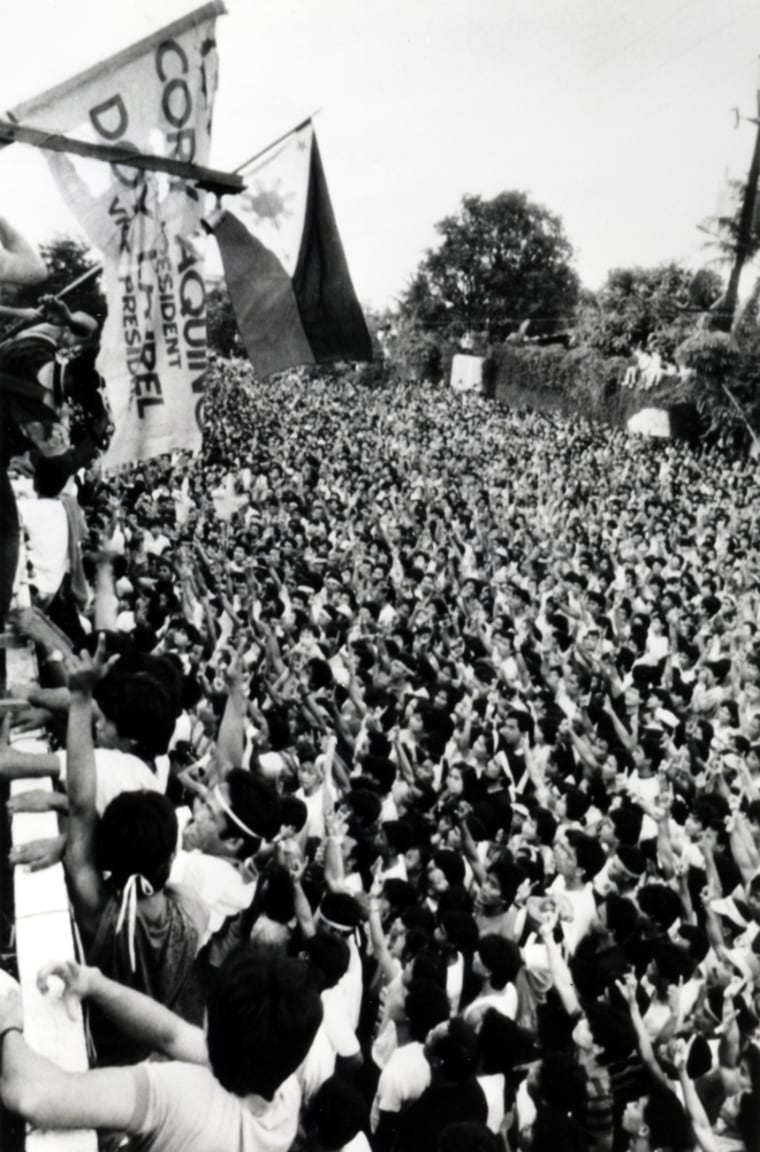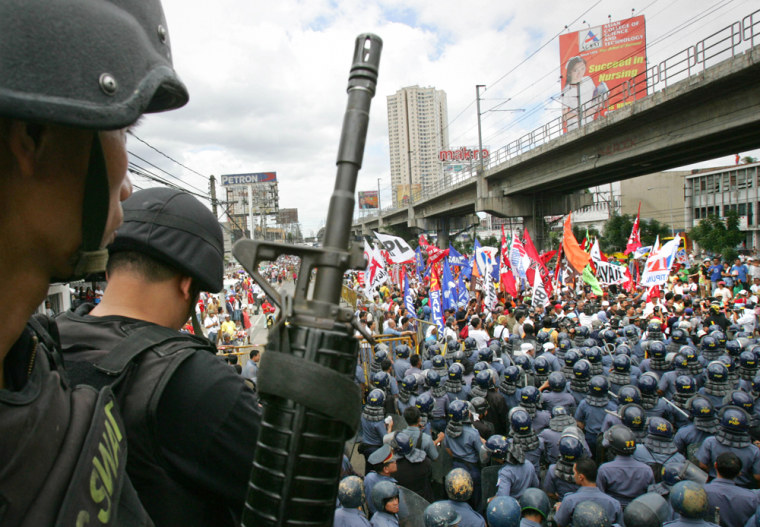LONDON — The scene looked so familiar, yet so surreal. It was the same corner of Ortigas and EDSA boulevards, the very epicenter of the 1986 People Power revolt that brought down Ferdinand Marcos, Imelda and their Palace of Cronies.
It looked like the same crowd, too: thousands chanting “Down with the dictator” and waving yellow banners.
Even Corazon Aquino, the icon of the People Power movement, was on hand — in a "de rigeur" yellow dress — calling on President Gloria Macapagal Arroyo to “do the honorable thing and resign.” It could have been February 1986.
But instead, if Friday marked the 20th anniversary of the Filipinos’ “proudest moment,” many among those of us who covered that moment in 1986 had to be asking today, “Whatever became of the great victory for democracy?” And if it is this hard in the Philippines, what will happen to democracy in Iraq?
A time of so much promise ...
Feb. 24, 1986, was a day of such promise. After a despotic 20-year rule, including 13 years of martial law, tens of thousands of political prisoners — many of whom simply disappeared — a Communist insurgency by then in its second generation, and endemic corruption surpassed only by Saddam Hussein’s regime, a new era was beginning.
Freedom of expression would replace fear of incarceration. The ruling class would be of the people, and not despite them.
Democracy would flourish, and so would a rejuvenated economy, because billions of dollars the Marcoses and their henchmen had squirreled away in foreign banks would be coming home.
The one-time "breadbasket of Asia" would reclaim its title. The "basket case" of Asia would be no more.
Enlightened civic leaders, military generals and the Catholic Church would work together to lift people from rampant poverty and inequality.

What happened?
But what, in fact, came to pass? In the 20 years since those heady days, two presidents — Fidel Ramos and Joseph Estrada — assumed power in what were deemed free and fair elections.
But the corruption-prone Estrada, a former movie star, was overthrown in yet another "people power" coup, in January 2001, which brought his vice president, the diminutive, firebrand economist Arroyo, to power.
She was elected in a 2004 vote, but has since been accused of financial foul play by her political foes, and even some friends.
A major ally of President Bush’s war on terror, Arroyo survived a Senate impeachment vote last September but is still fighting accusations of collusion and heavy-handed rule.
And the military landscape is just as volatile: In 20 years, there have been no fewer than 12 attempted coups.
And it was the threat of another coup, says Arroyo, that provoked her to call a state of emergency on Friday — the very day, 20 years ago, that Filipinos were celebrating their new freedom.
Her government says that at least 14 junior officers have been arrested for plotting to overthrow the president, using the "people power" rallies as a catalyst for angry demonstrations.
However, sources in Manila say that only four or five officers have been ‘”confined to their barracks.” Was this a real threat or just an excuse to exercise more control?
After all, it is the very reason Marcos gave in 1972 to justify his imposition of martial law. But certainly neither possibility augurs well for the Philippines, or those who support it.
The success story of the day
In the first six months of 1986, we probably filed as many stories on Marcos’ failed snap election, the Aquino campaign, the revolt and the subsequent Aquino victory as we have on the post-Katrina “long road back.”
NBC News, and others, had every reason to invest so much time and money in the “birth of Filipino democracy. A highly educated, English-speaking and Westernized “good people” had finally won the day over tyranny in a distant land. We reported on an oasis of freedom in a China Sea of authoritarianism.
Analysts have many explanations for the failure of the "people power" dream: that, despite the emergence of a middle class, the Philippines remained a ‘have’ and ‘have not’ country; that the coup plotters and coup targets were really members of the same cabal, playing by the same rules; that the church had done nothing to control an exploding population that physically smothered the economy; that the peso was bushwhacked by the Asian monetary crisis of the late ‘90s; that corruption and politically inspired violence has been around since Magellan, but democracy only began to take root in the 1930s.
Whatever the real reasons, the friends who were inspired by the pro-democracy revolt and the colleagues who covered it must be shaking their heads as they look back and see rulers entrenched in a barricaded palace, armed soldiers facing off with yellow-clad protestors, and social institutions — including the national media — threatened with closure by a state of emergency. Just like today.
